2.9 Crater morphologies
Now explore these final cross-sectional shapes (morphologies) typical of craters of different sizes, and learn about some of the reasons why morphology depends on size.
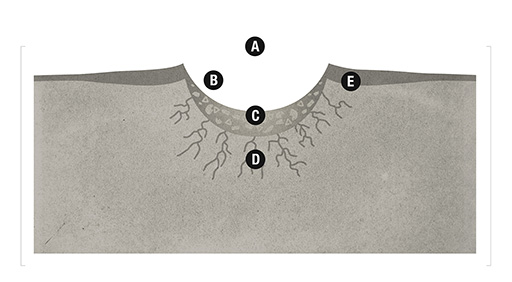
Figure 26 Bowl-shaped craters
- A – Smallest crater type.
- B – Depth typically 20% of crater diameter.
- C – Concave crater floors; made up of rocks melted during the impact and fractured pieces of solid rock.
- D – Ground beneath the crater floor is heavily fractured due to impact.
- E – Crater rim is built up by layers of material ejected as the crater formed.
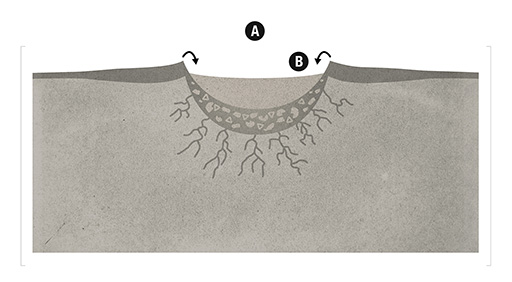
Figure 27 Flat-floor craters
- A – More mature simple craters.
- B – Like bowl-shaped craters, but material from crater walls slumps down into the crater, making the floor much flatter.
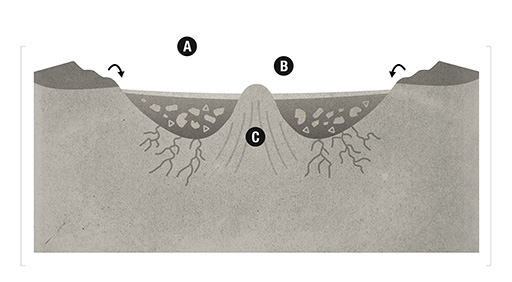
Figure 28 Central-peak craters
- A – Smallest of the complex crater morphologies.
- B – Generally flat crater floors, made up of significantly greater proportions of impact-melted rock compared to simple craters, with a peak or cluster of peaks in the centre.
- C – Peak forms when underlying material rebounds after crater formation, pushing upwards and rising above the crater floor.
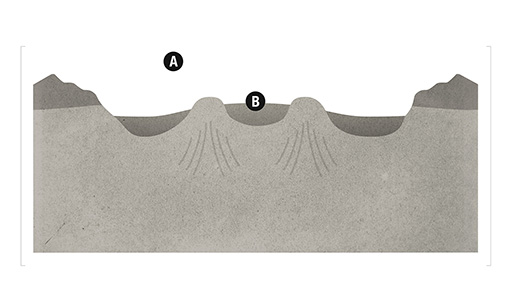
Figure 29 Peak-ring craters.
- A – Similar to central-peak craters, but the central peak here rebounds and rises so much that it becomes unstable.
- B – To regain stability, the oversized central peak collapses in on itself, leaving behind a ring of uplifted material surrounding a flat area in the centre.
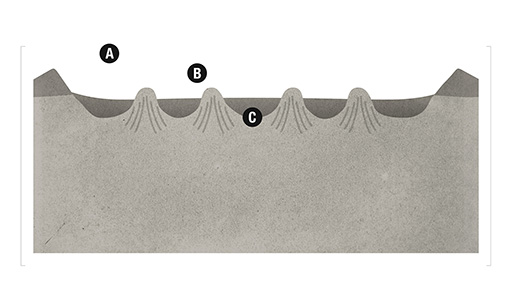
Figure 30 Multi-ring basin craters.
- A – The largest craters, associated with only the largest impactors and most energetic impacts.
- B – Crater diameters are so large that they contain several concentric rings of uplifted material, i.e. a larger version of peak-ring craters.
- C – In multi-ring basins, the largest proportion of material excavated by the impact event is melted, pooling in the centre of the basin floor.
